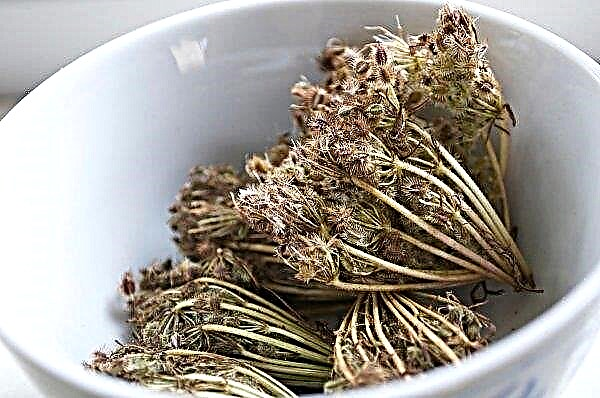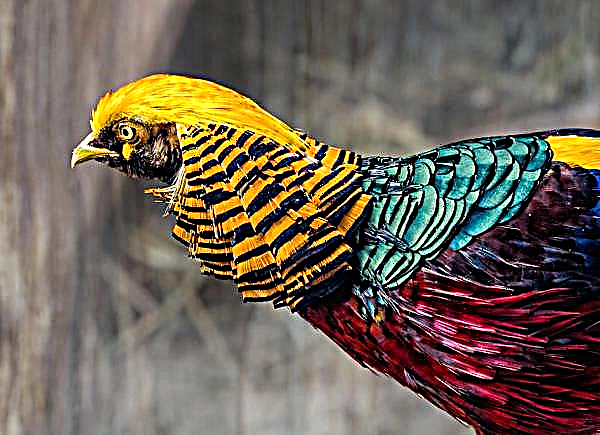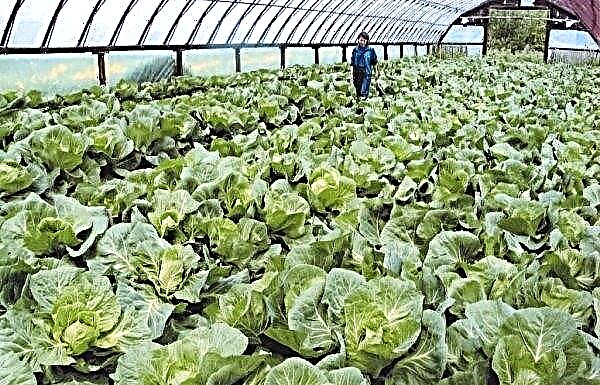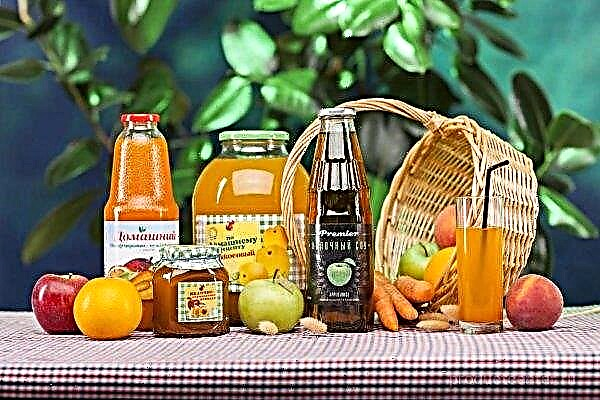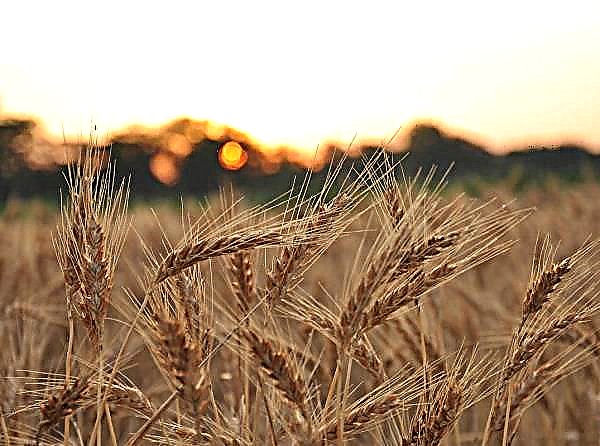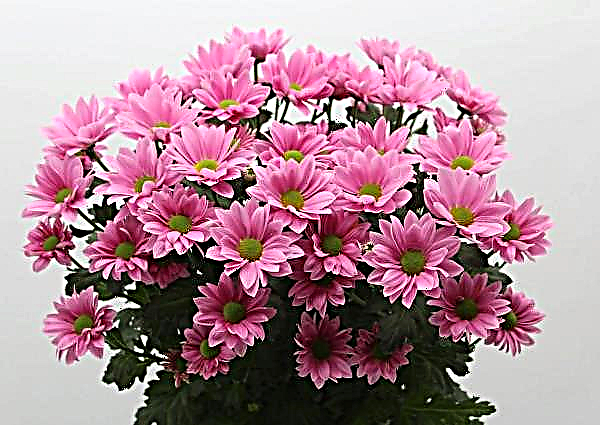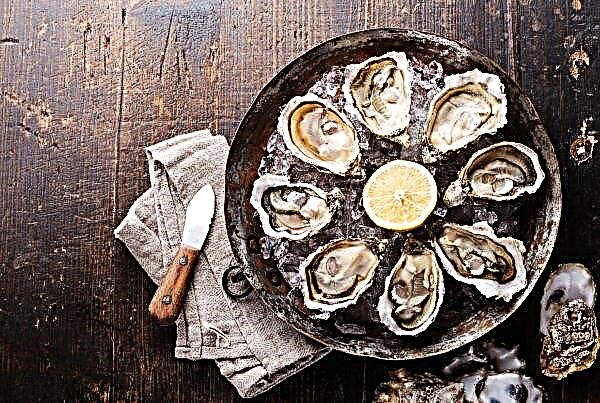Chickpea, also called Turkish or Egyptian peas, looks decent against the background of other legumes demanded by man, and often even is in the leading position. In sprouted form, chickpeas multiplies useful qualities and becomes an indispensable food for many people. On the germination of chickpeas at home and on its preparation as a meal, read further in the article.
Useful properties and contraindications
The presence of valuable vegetable protein and the rich composition of nutrients in the form of vitamins, minerals, acids and about 80 other useful compounds determines the benefits that germinated chickpeas bring to the human body both in a healthy state and in the presence of certain problems.
- The product is capable of:
- increase immunity;
- normalize metabolic processes;
- optimize blood composition;
- reduce the level of "bad" cholesterol in it;
- due to its rich methionine content, act as an effective hepatoprotector;
- stimulate the activity of the gastrointestinal tract;
- remove poisons and toxins from the body;
- stimulate brain activity;
- strengthen bone tissue;
- improve the condition of the visual organs;
- normalize the functioning of the nervous system;
- eliminate problems with the skin surface of the body;
- saturate the body with iron, which is especially important for pregnant women;
- stimulate lactation in nursing mothers;
- stabilize blood sugar;
- raise the tone of the body;
- normalize blood pressure;
- strengthen the walls of blood vessels;
- show diuretic and choleretic effects.
 The composition of the grains includes cobalt, copper, nickel, titanium, silicon, selenium, boron.
The composition of the grains includes cobalt, copper, nickel, titanium, silicon, selenium, boron.However, with all the useful qualities, Turkish peas can be contraindicated for use by people who, in addition to individual product intolerance, have health problems with:
- tendency to increased gas formation in the intestine;
- diseases in the bladder;
- kidney problems;
- gout
- thrombophlebitis.
Important! Chickpeas, having the ability to normalize the digestive system with minor problems, is at the same time contraindicated in cases of inflammatory processes in the mucous membranes of the intestine or stomach.
How to quickly sprout chickpeas for food at home?
With quality seeds, it is easy to germinate chickpeas. True, this cannot be done quickly, since the duration of germination depends entirely on the internal processes occurring in the seed, which cannot be accelerated. Even special germinators only simplify human actions, but by no means stimulate the germination process itself.
To properly sprout Turkish peas at home, you must:
- Rinse the dried peas thoroughly.
- Remove damaged instances.
- Then the seeds are soaked, for which they are poured with raw water at room temperature so that the water is 3 times the mass of peas.
- Leave the grains to swell at room temperature.
- After 10 hours, drain the water in which the product was located, rinse with fresh water and then remove it.
- Pour the swollen grains into a low and wide container, on the bottom of which moist gauze is laid.
- On top of the pea is covered with another layer of wet gauze.
- To prevent rapid evaporation, the container is covered with a film, a small part of which is opened for ventilation.
- After 24 hours, sprouts appear on the peas. But since the optimal length of the seedlings should be 2-3 cm, the peas are washed and again placed in a container.
- Another 24 hours later, the seedlings reach the optimum value.
- They are washed again, freed from water and placed in a refrigerator in containers that provide seedlings with air access.
Video: how to sprout chickpeas
How to use germinated chickpeas for food?
For more than one millennium, the valuable gastronomic qualities and useful properties of this plant, the rich composition of nutrients are actively used by humans.
Important! It is not recommended to store germinated chickpeas in the refrigerator for more than 5 days.
Hummus
Sprouted chickpeas are used both as an independent dish, and as one of the main ingredients in recipes for salads, side dishes and such a famous dish with the Arabic name hummus, which has a special unique taste.
Ingredients:
- sprouted chickpea - 250 g;
- olive oil - 65 ml;
- garlic - 3 cloves;
- cilantro - 1 bunch;
- sesame seeds - 3 tbsp. l;
- salt - 3 g;
- turmeric - 1-2 g;
- black pepper - 1-2 g;
- paprika - 2-3 g;
- coriander - 2-3 g;
- lemon juice - 1-2 tsp

Cooking process:
- All ingredients through a blender turn into a homogeneous mass.
- As necessary, a small amount of water is added to the mass.
- Sprinkle with paprika on top and pour over olive oil.
- A dish is served with bread or as a side dish for meat.
Did you know? While many plant foods can lose up to 70% of the nutrients they have in the canning process, chickpeas can preserve almost all nutrients in canned form (95%).
Sprouted Chickpea Salad with Green Apple
Ingredients:
- sprouted chickpeas - 200 g;
- leaf lettuce - 1 bunch;
- soybean curd - 100 g;
- olive oil - 1 tbsp. l .;
- large green apple - 1 pc.;
- tangerine juice - from 1 tangerine;
- ground ginger root - 2-3 g;
- black pepper - 3-4 g;
- salt - 2-3 g as desired.

Cooking process:
- A peeled apple and seeds are cut into cubes.
- Bean curd is also diced.
- Leaves of salad are chopped with straws.
- For dressing, mix the oil with tangerine juice and spices.
- The ingredients are mixed with dressing.
- Before use, lettuce for 10 minutes. kept in the refrigerator.
Did you know? On the surviving papyrus of an ancient Egyptian schoolboy who lived 3,500 years ago, a hieroglyph designating chickpeas is repeated several times, which indicates the popularity of this food product in those ancient times.
Chickpea, being one of the most prominent representatives of legumes, has long been inadequate in our area because of the difficulty of growing in a cool climate and the higher cost compared to peas and beans. However, the success of breeders, allowing you to advance the culture to the north, and the outstanding consumer qualities of chickpeas make it more accessible to a wide range of consumers.

